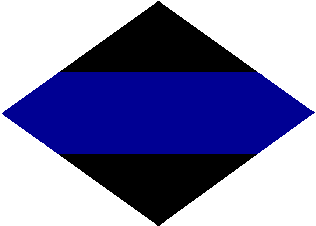
The 2nd Canadian Armoured Brigade was an armoured brigade of the Canadian Army that saw active service during World War II. The brigade was composed of the 6th, 10th and 27th Canadian Armoured regiments and saw service in northwest Europe, landing in Normandy on D-Day and remaining in combat up to Victory in Europe Day.

The Queen's Royal Hussars (The Queen's Own and Royal Irish) (QRH) is a British armoured regiment. It was formed on 1 September 1993 from the amalgamation of the Queen's Own Hussars and the Queen's Royal Irish Hussars. The regiment and its antecedents have been awarded 172 Battle Honours and eight Victoria Crosses. The regiment was based in Sennelager, Germany, until 2019 when it was relocated to Tidworth Camp, England. It is the armoured regiment for 20th Armoured Brigade Combat Team.

The King's Royal Hussars (KRH) is a Royal Armoured Corps regiment of the British Army formed in 1992. Based at Tidworth it serves as the armoured regiment of the 12th Armoured Brigade Combat Team (ABCT). Under Army 2020 Refine, it is intended to exchange its Challenger 2 tanks for Ajax vehicles.

The 24th Lancers was a cavalry regiment of the British Army that existed from late 1940 to mid-1944. Assigned to the 8th Armoured Brigade, the regiment fought during the Invasion of Normandy before being disbanded in July 1944. After disbandment, the regiment's personnel were sent to other cavalry regiments as reinforcements.

The 14th/20th King's Hussars was a cavalry regiment of the British Army. It was created by the amalgamation of the 14th King's Hussars and the 20th Hussars in 1922 and, after service in the Second World War, it amalgamated with the Royal Hussars to become the King's Royal Hussars in 1992.
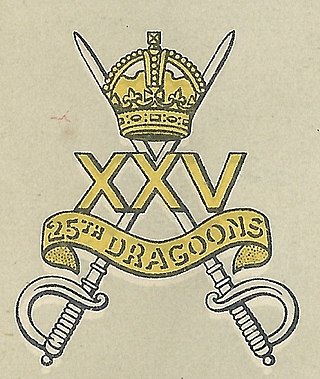
The 25th Dragoons was a cavalry regiment of the British Army from 1941 to 1947.

The 6th Armoured Division was an armoured division of the British Army, created in September 1940 during the Second World War and re-formed in May 1951 in the UK.

The 10th Armoured Division was an armoured formation of division-size of the British Army, raised during the Second World War and was active from 1941–1944 and after the war from 1956–1957. It was formed from the 1st Cavalry Division, a 1st Line Yeomanry unit of the Territorial Army (TA) which had previously been serving in Palestine. The division was converted from cavalry to armour and redesignated from 1 August 1941.
The 7th/11th Hussars was a light cavalry regiment and later light armoured regiment of the Non-Permanent Active Militia of the Canadian Militia. The regiment was formed in 1936 by the amalgamation of the 7th Hussars and the 11th Hussars from the Eastern Townships of Quebec. In 1965, the regiment was amalgamated with The Sherbrooke Regiment (RCAC) to form The Sherbrooke Hussars.

The 14th Indian Infantry Division was an infantry division of the Indian Army during World War II. It fought in the Arakan Campaign 1942–43, and was subsequently converted into a Training Division, providing drafts of replacements for units of the Fourteenth Army during the Burma Campaign.

The Northumberland Hussars was a Yeomanry regiment of the British Army, transferred to the Royal Artillery for the duration of the Second World War. It was disbanded as an independent Territorial Army unit in 1967, a time when the strength of the Territorial Army was greatly reduced. The regiment's name lives on in the title of the command and support squadron of the Queen's Own Yeomanry (QOY), a Formation Reconnaissance Regiment based in Newcastle upon Tyne.
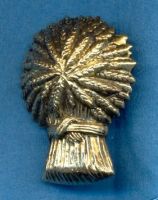
The Lothians and Border Horse was a Yeomanry regiment, part of the British Territorial Army. It was ranked 36th in the Yeomanry order of precedence and was based in the Scottish Lowland area, recruiting in the Lothians – East Lothian (Haddingtonshire), Midlothian (Edinburghshire), and West Lothian (Linlithgowshire) – and along the border with England, particularly Berwickshire. It amalgamated with the Lanarkshire Yeomanry and the Queen's Own Royal Glasgow Yeomanry to form the Queen's Own Lowland Yeomanry in 1956.
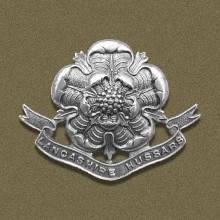
The Lancashire Hussars was a British Army unit originally formed in 1798. It saw action in the Second Boer War, the First World War and the Second World War. In 1969, the regiment reduced to a cadre and the Yeomanry lineage discontinued.
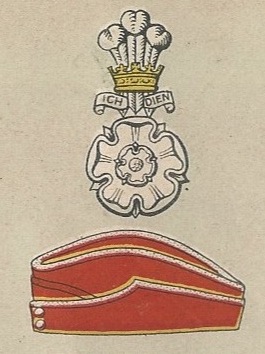
The Yorkshire Hussars was an auxiliary unit of the British Army formed in 1794. The regiment was formed as volunteer cavalry (Yeomanry) in 1794 during the French Revolutionary Wars and served in the Second Boer War and the First World War. It was converted to an armoured role during the Second World War. In 1956, it merged with two other Yorkshire yeomanry regiments to form the Queen's Own Yorkshire Yeomanry. Its lineage is continued today by the Queen's Own Yeomanry.
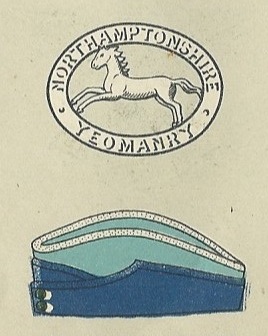
The Northamptonshire Yeomanry was a Yeomanry regiment of the British Army, formed in 1794 as volunteer cavalry. It served in the Second Boer War, the First World War and the Second World War before being reduced to squadron level in 1956. It ceased to have a separate existence in 1971.

The 31st Indian Armoured Division was an armoured division of the Indian Army during World War II, formed in 1940, originally as the 1st Indian Armoured Division; it consisted of units of the British Army and the British Indian Army. When it was raised, it consisted of two Armoured Brigades and one Motor Brigade.

The 14th Canadian Hussars was a light cavalry and later light armoured reconnaissance regiment of the Non-Permanent Active Militia of the Canadian Militia and later the Canadian Army. First raised in 1910 as the 27th Light Horse, the regiment was Redesignated in 1920 as the 14th Canadian Light Horse and again in 1940 as the 14th Canadian Hussars. On 31 March 1968, the regiment was reduced to nil strength and placed on the Supplementary Order of Battle.
The 32nd Indian Armoured Division was an armoured division of the Indian Army during World War II. It was formed in April 1941 as the 2nd Armoured Division and renamed the 32nd in December. It never saw any combat and was broken up to form the 44th Armoured Division in February 1943.

The 146th Regiment Royal Armoured Corps was an armoured regiment of the British Army's Royal Armoured Corps that served in India, Burma, and Sumatra during and after World War II. 146 RAC survived the war, and was still active in early 1947.


















